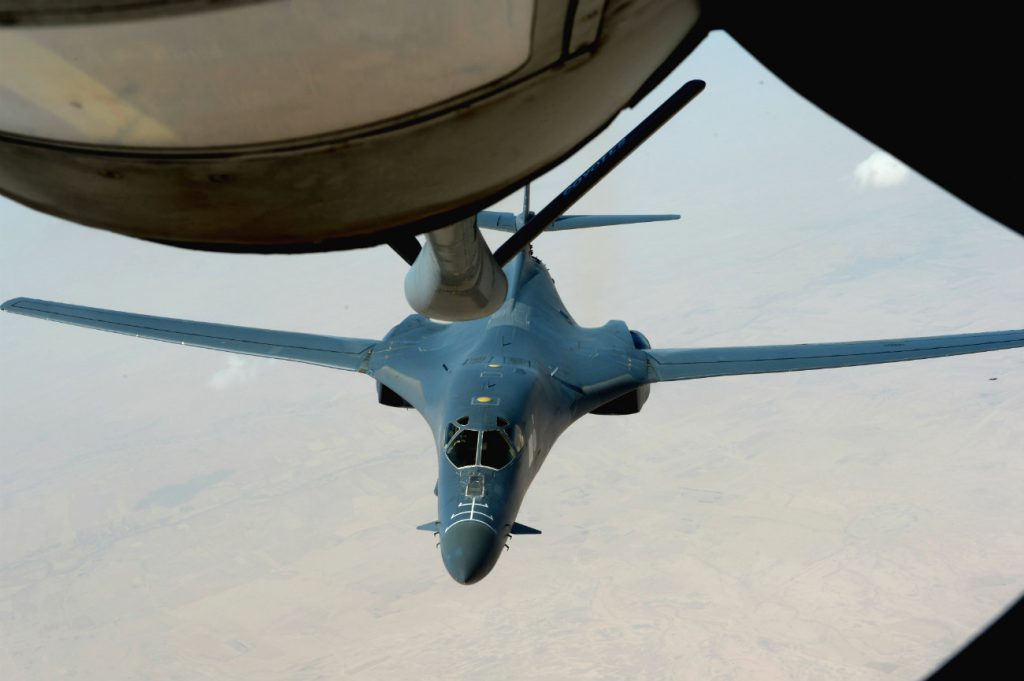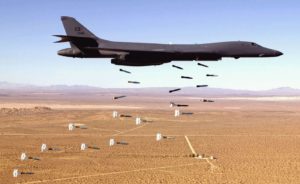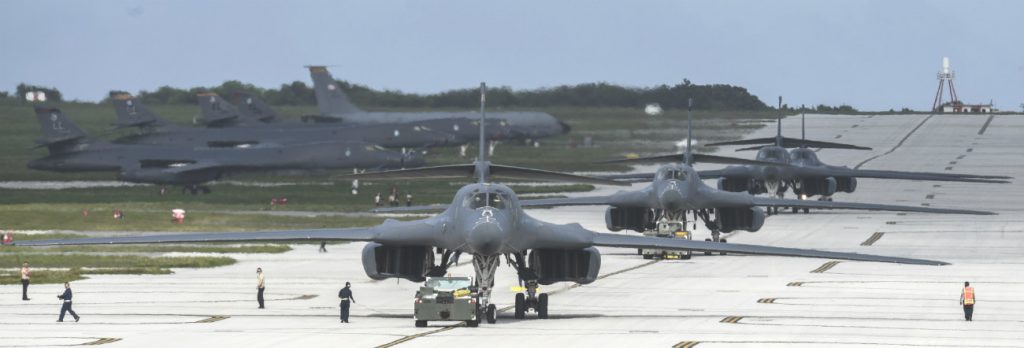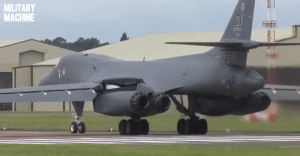The B-1B Lancer Long Range Strategic Bomber
The B-1B Lancer, produced by Rockwell Industries, is a variable swept-wing, long-range strategic bomber aircraft. It was initially designed to take over for the B-52 Stratofortress but revised design transformed it into a strategic bomber capable of flying at low altitude to strike targets deep within contested territory. Only one hundred B-1B Lancers have been produced and 66 were still in service as of 2012.
Performance:
Lancers can reach cruise speeds over Mach 1 at 50,000 feet, and deliver 75,000 pounds of ordnance from just their internal payloads. External hardpoints can be used to equip the B-1B Lancer with additional fuel or nuclear ordnance. Upgrade proposals would see an engine upgrade to allow for speeds of over Mach 2 and air-to-air missile capability. The B-1B currently serves as a part of the United States’ strategic air command where it acts as a nuclear-capable bomber available at-will.

Cold War Design In Modern Service:
In October of 1986, the first B-1 entered service. The B-1B was supposed to be the replacement to the aging B-52s in service. Incorporating a swept wing design similar to F-14 Tomcat, the B-1 was particularly effective at unguided bombing runs at low altitude. Mission readiness was always an obstacle and it was held back from Operation Desert Shield in 1991. It would go on to serve in Kosovo, the Iraq War, and Operation Enduring Freedom in Afghanistan.

Interim Bomber Role:
The B-1B is an upgrade to the B-52 Stratofortress in that it was built to have a reduced radar cross section and could fly at extremely low altitudes. An enhanced suite of electronic countermeasures also increases its survivability. Despite its technological improvements over a bomber that was fielded in the 1950s, the B-1B Lancer is a hold-over until the United States Air Force can get its Long Range Strike Bomber active. The B-1B has many aspects of stealth technology incorporated into its design: reduced radar visibility, reduced communications array foot print.

Firepower:
As a bomber, it can carry up to 75,000 pounds of ordnance over an incredible 5,900 miles. This is the largest ordnance payload in the United States Air Force. This has also lead it into a new role as a ground support bomber. Because the B-1B Lancer can spend a lot of time in the air loitering, it is a great choice for ground forces that need air support to stay present. In Operation Enduring Freedom, B-1B Lancers accounted for nearly two thirds of all ordnance dropped — including 3,900 JDAMs. It is also cheaper to maintain than the current fleet of B-52s. Logistics and application have given the B-1B an extended stay until the B-21 Raider is formally tested and approved for use.

Combat Service:
In terms of accomplishments, the United States Air Force credits the B-1B Lancer with breaking over fifty world records for speed, payload, range, and time of climb for its class of aircraft. There is no current plan to formally retire these bombers until a replacement has been thoroughly vetted. The B-1B Lancer is the premier long range strategic bomber for the United States. Optimally, the Long Range Strike Bomber (LRSB) will replace it by or after 2028.
 Engine Power:
Engine Power:
The B-1B Lancer is powered by four General Electric F101-GE-102 augmented turbofans. Each is capable of a dry thrust of 17,390 lb-ft each and 30,780 lb-ft with afterburner. There are currently plans to upgrade that engine to a Pratt & Whitney F117, which is expected to help the B-1B surpass Mach 2 at altitude.
Now see more striking images of the B-1B Bomber.
See B-1B Lancer Specifications
| Length: 146 ft (44.5 m) |
| Height: 34 ft (10.4 m) |
| Wingspan: 137 ft (42 m, extended); 79 ft (24 m, swept) |
| Speed: Mach 1.25 (721 kn, 830 mph, 1,335 km/h) |
| Ceiling: 60,000 ft (18,000 m) |
| Maximum Takeoff Weight: 477,000 lb (216,400 kg) |
| Range: 5,100 nmi (5,900 mi; 9,400 km) |
| Crew: 4 – 1 aircraft commander, 1 copilot, 1/1 offensive and defensive systems officers. |
| Unit Cost: $283.1 million |

